Questions About France
Escorted small group tours for mature and senior travellers to France. Designed for couples and solo travellers who like to explore and enjoy learning as they travel to Paris, Provence, the South or the Loire Valley and beyond.
13 Sep 19 · 2 mins read
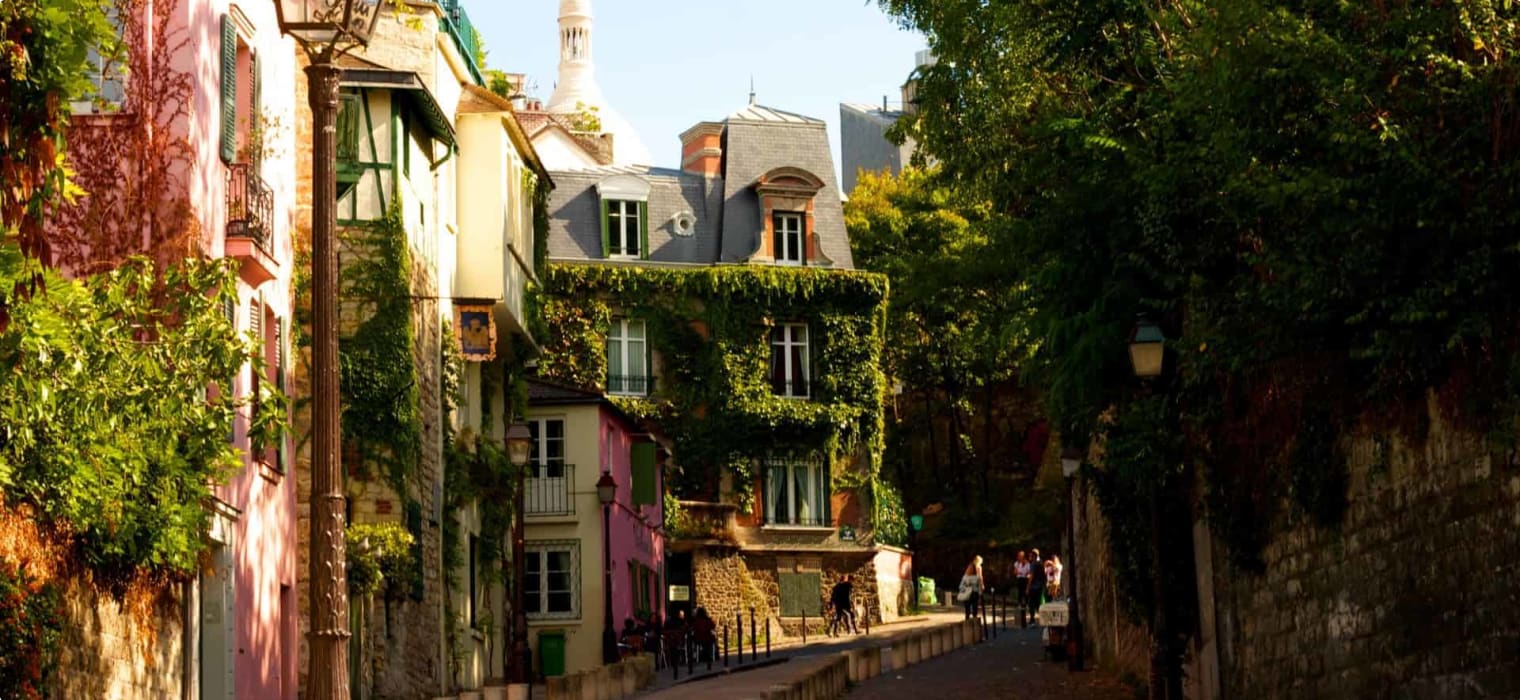
Questions About France for senior travellers.
Odyssey Traveller specialises in crafting unforgettable experiences for senior and mature-aged travellers who are interested in learning as they travel as a couple or as a solo traveller. Providing adFventure and programs to escorted small group tours since 1983. Odyssey has built up a reasonable knowledge bank to answer questions about France that travellers are likely to ask, as they make their plans to tour independently, or with us as part of a small group tour. We hope that this list of frequently asked questions and the answers we provide will help you with planning your next holiday.
Read on, but please do not hesitate to contact us via the website, or through email or chat if you have more questions about France or our other tours.
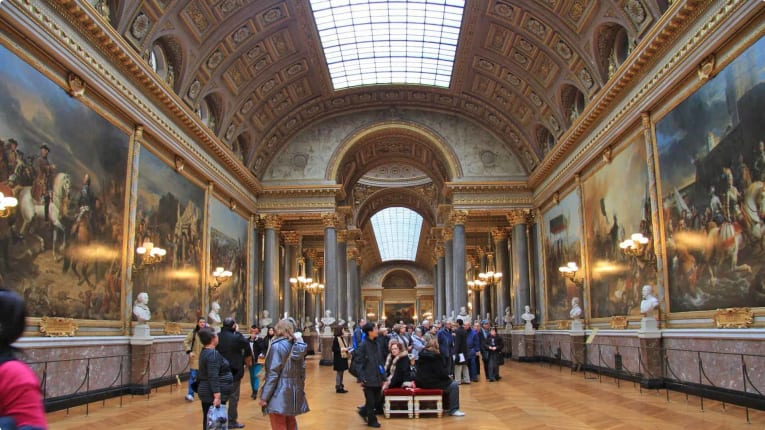
FAQs
Where is France located?
France is located at the heart of Western Europe. It is bordered by Italy and Spain to the south, Switzerland to the east, Germany, Belgium, and Luxembourg to the North, and (across the English Channel) the United Kingdom to the North-West.
Located between Northern and Southern Europe, the British Isles and the Mediterranean, France ‘has long provided a geographic, economic, and linguistic bridge’ joining the regions of Europe (Britannica), while maintaining its own unique and influential culture. The third biggest country in Europe by area, after Russia and the Ukraine, France has long been one of the most powerful, casting an influence felt both in Europe and across the globe.
How did France get its name?
During the Roman Empire, the region known as France today was referred to as Gallia, or Gaul. Following the end of the Roman Empire, the region was associated with a Germanic tribe known as the Franks, and when a monarchy was established it became known in Latin as Francia, or the Frankish Empire. From Francia the modern English term France was derived.
Where the term ‘Frank’ comes from is an issue of historical debate. Some have linked it to the term ‘frank’ (free) in English, as after the conquest of Gaul, only the Franks were free of taxation. Others theorise that it comes from the proto-Germanic word *frankon or javelin. In Latin, the throwing axe of the Franks was known as francisca. Other scholars have suggested that these weapons were named because of their association with the Franks, not the other way around.
When was France founded?
To the ancient Romans, France, along with a significant portion of Belgium, the Netherlands and Germany was known as ‘Transalpine Gaul’, which was populated by Celtic tribes. In 121 BC the Roman Republic took land surrounding modern day Provence, and the remainder of Gaul was seized during the reign of Julius Caesar (from 58 to 50 BC). Gaul was quickly assimilated into the Roman Empire, and became a centre of culture and writing.
During the empire’s period of decline, Gaul was subject to successive Germanic invasions, as Franks, Burgundians, and Visigoths all settled in Gaul. The culture remained Roman, however, and newcomers converted to Christianity.
From 481 to 511, Clovis I consolidated all of the Frankish tribes under one kingdom, though this was divided between his four sons on his death.
France remained divided until the reign of Charlemagne (747?-814), now regarded as the founding father of France. Charlemagne unified most of France, and extended his empire into what is now Germany and Italy.
Following the death of Charlemagne’s grandson, Lothar I, the Frankish Empire was divided into three kingdoms. The region of West Francia, given to his son Charles the Bald, would become the precursor to modern France.
In 987, Hugh Capet was proclaimed King of France. His successors would add extensive territory to West Francia. The Kingdom of France was declared in 1180 by Phillip II Augustus, essentially establishing what would become modern-day France.

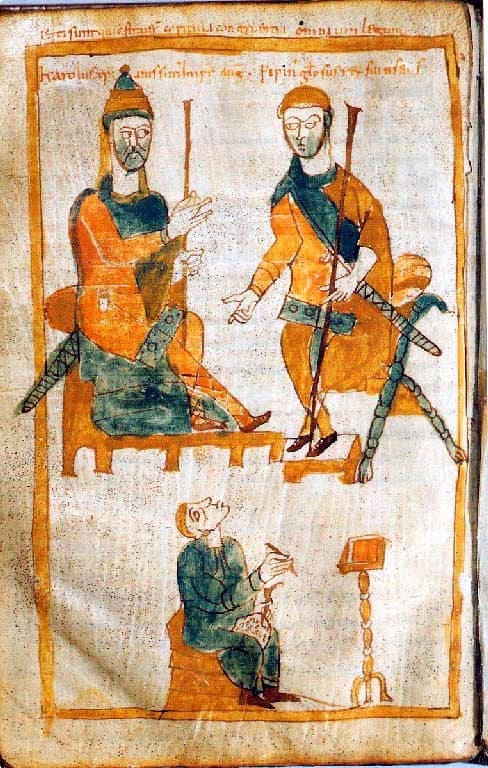



FAQs
When did France become a republic?
There’s not an easy answer to this question, as for over a hundred years France went back and forth between republics and various monarchies (the current French Republic, established in 1958, is widely known as the fifth republic). You’re probably thinking however, about the first French republic, established during the French Revolution.
By the 18th century, the French king and aristocracy had become increasingly detached from the problems facing the country. The King and his courtiers lived in the lavish palace of Versailles, explored in these two Odyssey Traveller articles: Constructing Versailles, Living at Versailles and Conserving Versailles. At the same time, a rising class of businessmen were making increasing amounts of money – but had no political power to match – while overpopulation, inefficient agriculture, and widespread unemployment meant that life got tougher for France’s poor. The result was increasing resentment against the aristocracy and the King.
In response to a growing debt crisis, Louis XVI convened the Estates-General, an ancient meeting of the three ‘estates’ of the French realm: the clergy, the nobility, and the ‘third estate’ or the people. At the convention debates over procedure broke out – a proxy for the fact that, though the ‘third estate’ contained by far the majority of the French population, the clergy and nobility could easily outvote it.
Finally, the deputies of the ‘third estate’ declared that they were not simply the ‘third estate’ but a national assembly. Soon afterwards the people of Paris – who had faced a prolonged food shortage the previous year – rose in rebellion in the famous Storming of the Bastille. Peasants in the countryside also rose up as insurgents.
Soon afterwards, the Assembly met, sweeping away all the old aristocratic privileges and drafting the famous Declaration of the Rights of Man and the Citizen.
However, the king and the aristocracy continued to resist further reform. In response, in June 1792, a huge crowd of Parisians stormed the royal palace. The legislative assembly declared a Republic.
The first French Republic would prove to be short-lived. Even before the Republic had been declared France went to war with a coalition of Prussia and Austria. Massacres of prisoners led many representatives to fear anarchy. In the midst of crisis caused by the war and continued revolt in the provinces, power was centralised by the Jacobin faction of the assembly, which declared a ‘terror’ against those deemed to be enemies of the revolution. During this period around 17,000 people were executed, frequently by guillotine.
The fall of Maximilien Robespierre brought the Terror to an end, and inaugurated the Thermidorian period.
In 1799, Napoleon Bonaparte, a general who had risen to fame due to his skill in the Revolutionary War, seized power in a coup and the First Republic came to an end. However, Napoleon’s reign cemented many of the legacies of the French Revolution and spread these to the rest of Europe.
What is France famous for?
We don’t have the space here to encapsulate everything that’s well known about France, so here are some highlights:
The arts:
- France – and particularly Paris – has long been at the forefront of western art and culture. While artists were active in France from the Late Middle Ages, it was after the establishment of Versailles that French artists became internationally influential. Jean-Honoré Fragonard pioneered the exuberantly ornamental pastel styles of rococo, while the neoclassical revolutionary art of Jacques-Louis David served as a republican response.
- In the 19th century, artists bristled against the strict rules of the Academy of Fine Arts, leading to a succession of avant-garde movements, from the Romanticism of the early 19th century, to realism in the mid-19th century. The sharpest break with academic painting was made by the impressionists in the 1860s. Impressionist painters such as Monet, Manet, Degas, and Renoir abandoned strict representation to record the reality that the human eye sees – representing light and movement through washes of colour.
- In the late 19th and early 20th centuries, Paris became home to the avant-garde of art as painters such as Pablo Picasso, Georges Braque, and Henri Matisse challenged realism further, moving towards abstract art. In the interwar era, France remained at the forefront of art, and was home to important outposts of the international surrealist and dada movements.
- For more information on French art, check out our previous articles: Monet’s Giverny Garden and Monet’s Water Lillies.
Literature:
- France also has a significant literary history. In the Middle Ages, France was known for epic poems such as The Song of Roland, and the courtly lyric poems which expressed romantic love in a period in which most aristocratic marriages were arranged.
- In the 18th century, France became a centre of Enlightenment ideas thanks to the works of Voltaire, Jean-Jacques Rousseau and Denis Diderot.
- France was as much a centre for avant-garde literature as it was visual art. Significant 19th century writers included the novelists Balzac, Stendhal, Flaubert, Zola and Victor Hugo, and the poets Rimbaud, Baudelaire and Mallarmé.
- In the 20th century, Paris was home to the existentialist movement embodied by Albert Camus, Jean-Paul Sartre, and Simone de Beauvoir, as well as the surrealist writer Andre Gide.
- As much as the individual writers and artists who have lived in France, it is the atmosphere that surrounds French art and literature that sets it apart. In the 19th century, the Parisian avant-garde became associated with a bohemian way of life that challenged the strictures of the Victorian Era.
- Today the arts are uniquely valued in France. Here, intellectuals have as much fame as reality TV stars, and people discuss books and ideas at the dinner table. Perhaps because of this, Paris is famous not just for its own artists but as a home of expatriates – including Picasso, Vincent Van Gogh and Ernest Hemingway.
Art de vivre (the art of living):
- As well as its prominence in the formal arts, France is known internationally for elevating daily life into a kind of art form. Central to the art de vivre is the little moments, which are imbued with a simple elegance. The French take time to start their day with a coffee and a croissant, make sure to shop for fresh ingredients at local markets and savour wine, dinner and good conversation with friends. Stroll the streets of Paris or the French countryside, where all is in harmony.
- Fresh produce is at the heart of the French art de vivre.
How did France become the fashion capital of the world?
The association of France with style and fashion began during the reign of Louis XIV, who established the great palace of Versailles. In the 1670s, the first fashion magazines were created in France, which marketed French styles to women across Europe, and introduced the fashion ‘season’, meaning that fashions constantly changed.
In the late 19th century, haute couture – in which clothes were made specifically to fit the buyer – was developed in Paris. Fashion designers such as Paul Poiret and Jeanne Paquin became international celebrities, presaging today’s designer labels.
In the 1920s Coco Chanel promoted a boyish and simple chic – including the enduring ‘little black dress’ – that overthrew the corseted designs of the 19th century. Chanel endures as a luxury fashion house today, joined by other French designers such as Christian Dior, Givenchy, and Yves Saint Laurent.
Today, French fashion and beauty inspire fashionistas worldwide with an ethos infused with the effortlessness and simple elegance of the art de vivre.
Where to visit in France?
Paris:
- More than anywhere else, Paris exercises a hold over the imagination. It’s hard to measure up to every tourists image of elegant boulevards, literary cafes, and romantic walks beyond the Seine – but Paris does. On your first visit, make sure to see the iconic Eiffel Tour, Arc de Triomphe and Louvre.
- Yet, Paris has so much to offer beyond the tourist staples. The amount of world-class art here justifies several trips – it can take several days to get through the Louvre, not to mention the city’s more than 130 other museums. Make sure to take some time away from visiting sites to live like a local: buy fresh produce, eat in cafes, browse flea markets, and experience the Parisian way of living that draws people from around the world.
- For a chance to explore Paris in depth, why not join Odyssey’s 21 Days of Parisian Life tour?
- We also invite you to read our other articles for more information about Paris: Designing Paris, Paris Leaders and Landmarks and The Elegant Arcades of Paris.
Outside Paris:
- While the country might have been unified much longer than most of its European counterparts, the culture and people of France remain fiercely diverse. Each of France’s regions is home to a distinct culture, national dress, and cuisine. Reflecting this, the landscape is always changing, from rugged Brittany to the Alps to the sunny beaches of the French Riviera. It’s impossible to capture so much diversity in one article, so here are some highlights:
Provence and the Côte d’Azur:
- Outside of Paris, Provence and the French Riviera are probably the most iconic regions of France – with good reason. The bright sun, crystal-clear beaches and fields of lavender inspired artists such as Van Gogh, Cézanne and Renoir.
- The area also has a long history: Roman remains dot the landscape, while the city of Avignon was home to popes during the Middle Ages.
- In the 20th century, the French Riviera became the holiday locale of choice for artists, writers and film stars, home to charming coastal village and luxury resorts.
- Odyssey Traveller offers several tours which visit Provence: Paris-Bordeaux-Provence By Train, Southwest France: Along the Canal du Midi, and Provincial France.
Burgundy:
- In the Middle Ages, Burgundy was a powerhouse, ruled by its own duke and existing outside the French crown. Today, Burgundy is quintessential rural France, sleepy green hills dotted with wineries (home to the famous Burgundy reds) and medieval villages.
- The city (and once capital) of Dijon is a testament to Burgundy’s former wealth and power, filled with medieval and Renaissance buildings. Particularly lavish is the neoclassical Palais des Dukes, once home to Burgundy’s dukes.
- Odyssey Traveller visits Burgundy on our La Belle France and Provincial France tours.
Normandy and Brittany:
- Normandy has long played an important role in European history: it was here that William the Conqueror reigned before (and after) his conquest of England in 1066 and here that the famous D-Day invasion was launched bringing World War Two to a close. This history is tangible in Normandy, from the Bayeux Tapestry, with its vivid account of the Norman conquest of England, to the cemeteries of the D-Day beaches, to the striking island monastery of Mont St. Michel, one of the most important pilgrimage destinations in the Middle Ages.
- Brittany, or Breizh, a rugged Atlantic ocean peninsula, is one of the most distinctive regions of France. Only incorporated into France in 1592, here the Breton language – closely related to Celtic languages such as Cornish and Welsh – is still spoken. Local festivals celebrate Celtic-influenced Breton music, dance, and poetry.
- Odyssey Traveller offers a specialty tour devoted to Normandy and Brittany.
- For more on the diversity of rural France, read our articles about South West France, the historic Loire Valley, and the island of Corsica.
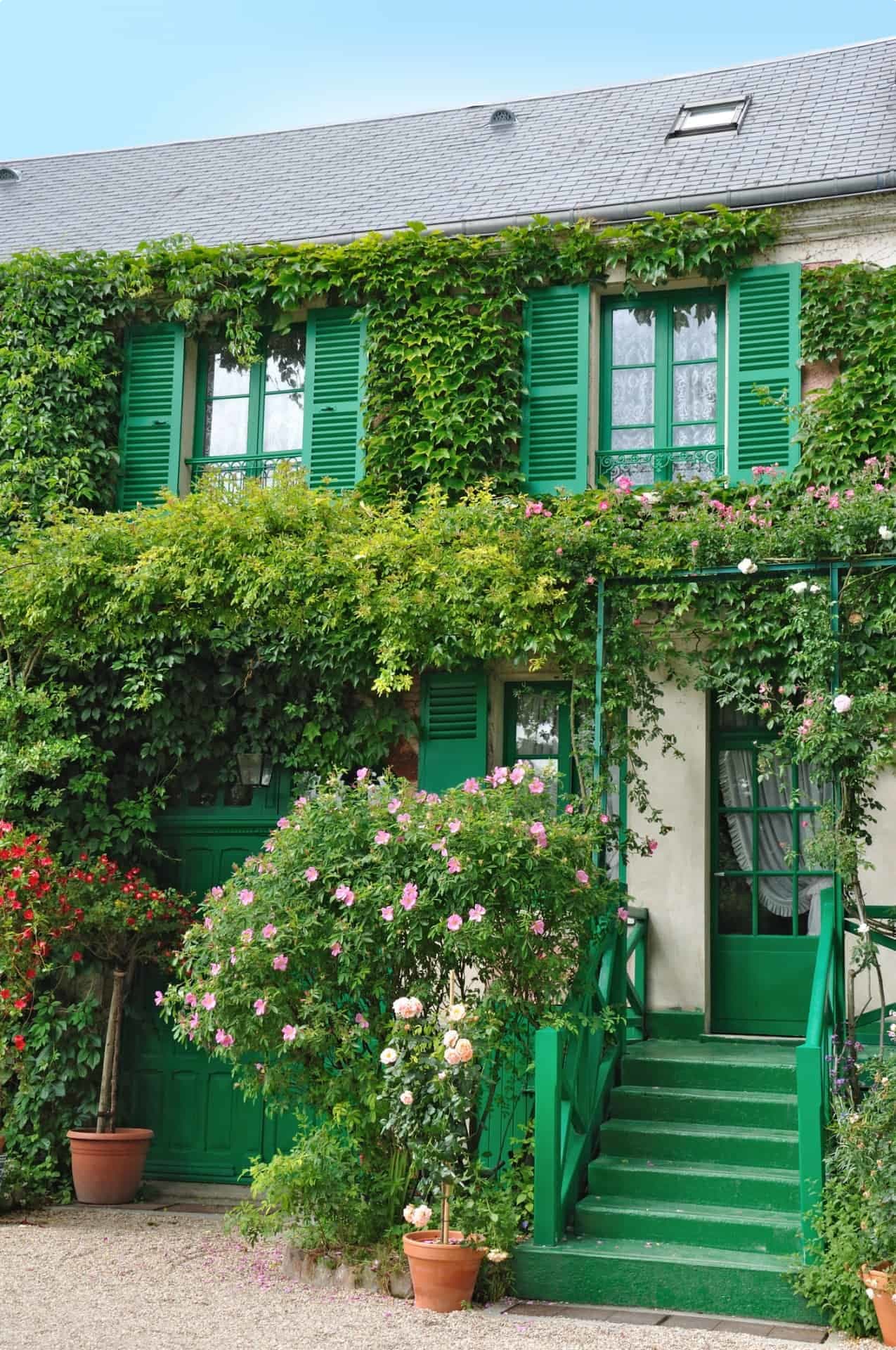


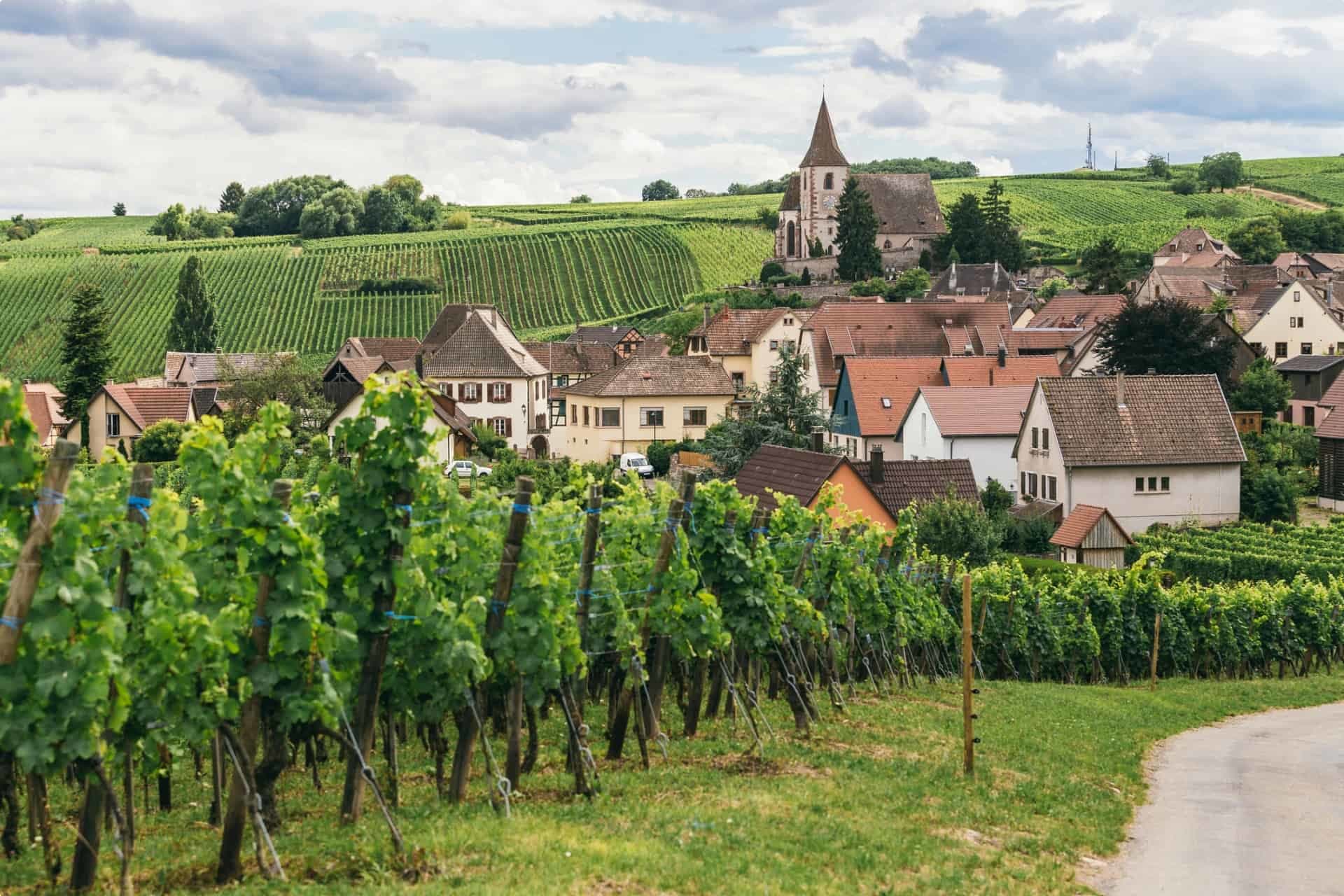
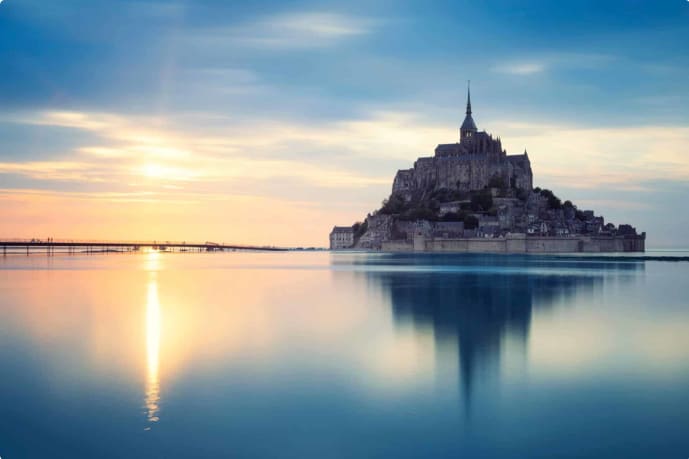
FAQs
What do they eat in France?
The international celebration of French food as the height of fine dining neglects the heavily localised and diverse nature of French food. Regional specialties include crêpes (Brittany), bouillabaisse (Marseille) and cassoulet (Toulouse).
France is also home to over 500 varieties of cheese. Wine has been a part of French culture since the Roman Empire, and today there are dozens of wine producing regions around France, including Bordeaux, Burgundy, Provence, the Loire Valley, and Champagne. Indicating the seriousness with which wine is treated, the French government regulates that only certain grapes can be grown in certain regions, and determines what land can be used for vineyards.
French bread is a cultural icon, served with virtually every meal. No matter where you go, you’ll likely encounter a boulangerie selling all kinds of bread. Pastries and baked goods are another specialty of the French, including croissants, tartes (tarts) and gâteaux (cakes).
What is the climate in France?
The climate in France varies considerably, with four major climate regions. The western coast of France has a rainy and cool climate, with little variation between seasons, while inland has a continental climate of hot summers and cold winters. The Mediterranean has a hot dry summer and a mild winter, and the final region, the French Alps have a mountain climate, with snow three to six months a year.
Can France rebuild the Notre Dame?
If you’re concerned about the future of the iconic Notre Dame cathedral, following the devastating fire in April 2019, there’s good news – the French senate has recently voted to rebuild the cathedral in medieval style.
Difficulties have emerged, however, regarding the roof of the cathedral – which was built out of 800-year-old oaks. There are concerns that there might not be enough oaks extant to rebuild the roof – though some historians have asserted that the Baltic states might hold enough tall trees.

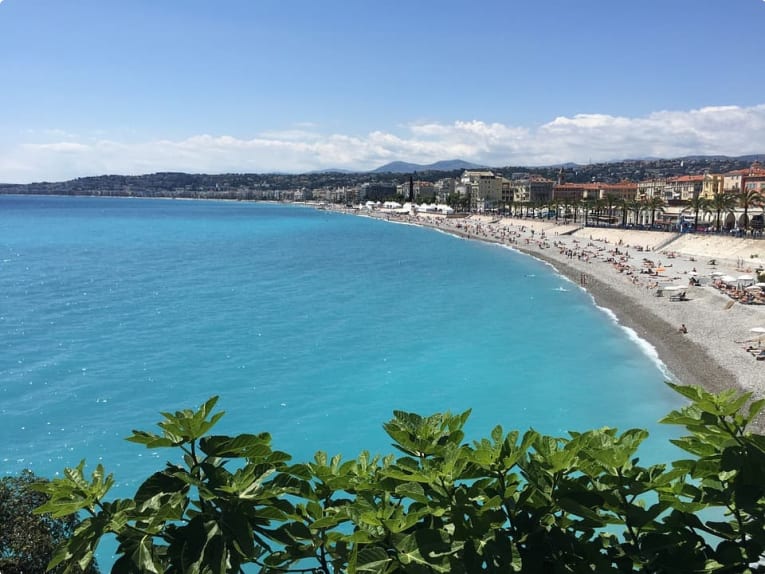

If this article has made you interested in visiting (or re-visiting) France, why not join an Odyssey Traveller tour? Reflecting the richness of French history, culture and scenery, we offer over 20 tours of France. Each offers a diverse perspective on France, lead by experts and local tour guides so that you have a culturally rich and authentic experience.
Related Tours
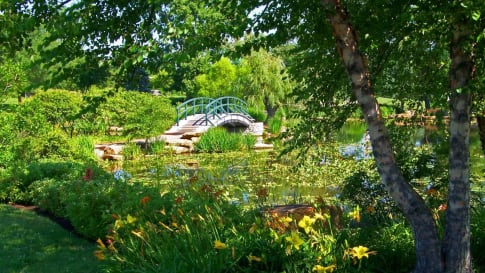
20 days
Apr, SepFollowing Monet
Visiting France
Join Odyssey Traveller, one of the best small group tour companies for Europe, as we follow French Impressionist master Claude Monet (1840-1926) to the beloved places he painted joined by local guides in France on this 20-day European tour. Each day our small group journey visits key destinations that influenced Monet. Join like minded people be they couples or solo travellers on this escorted tour. Minimal Single supplement charged to Solo travellers.
From A$15,450 AUD
View Tour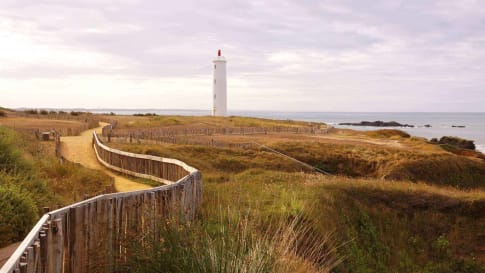
21 days
Jun, Sep, JulFrance on Foot | Small Group Walking Tours France
Visiting France
Our France on Foot small group walking is designed for the active walker and extends from the scenic island of Noirmoutier on the Atlantic Coast via the Massif Central on the borders of Limousin and the Auvergne to the snow-tipped peaks of the Alps in Savoy.
From A$19,345 AUD
View Tour
24 days
Sep, AprLa Belle France small group escorted history tours for seniors
Visiting France
Travelling with like minded people on this small group we visit several culturally significant and picturesque regions of France, including Provence, Champagne, Burgundy, and Bordeaux regions, where we sample wine and learn more about the tradition of wine-making. We also visit the Loire Valley to see its many castles. Finally, we travel to Bayeux, from where we we visit Mont St Michel and spend time up on the Normandy landing beaches with local guides.
From A$19,965 AUD
View Tour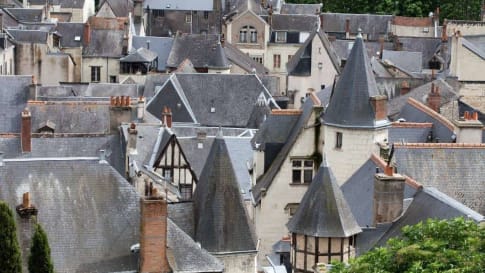
18 days
Jun, SepLoire Valley Walking Tours | Small Group Tours of France
Visiting France
The Loire Valley is the largest of all the UNESCO World Heritage sites. This small group walking tour daily itineraries cross a multitude of historic towns and villages providing authentic experiences for couples and single travellers to enjoy. A small single supplement applies to solo travelers.
From A$13,365 AUD
View Tour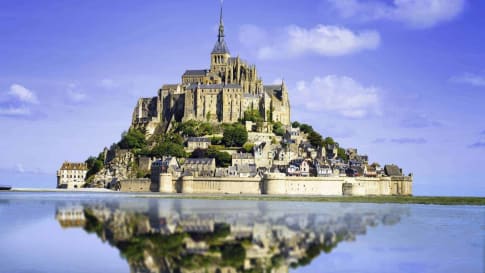
22 days
Aug, May, Apr, SepNormandy and Brittany escorted history tours for small mature grups
Visiting France
This small group tour for couples and solo travellers is centred on the North West corner of France: Normandy, where the peaceful landscape belies a turbulent past; Brittany, where a strongly separate Celtic culture is still evident; Poitou, famous for its rich farmlands and historic ports; and the Loire Valley, replete with royal châteaux.
From A$15,895 AUD
View Tour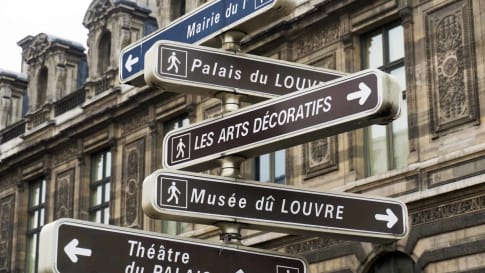
21 days
Mar, SepExplore Paris | 21-day Small Group Tour Exploring Parisian Life
Visiting France
On this small group tour of Paris, travellers take the time to join local guides to learn about the destinations within this city. Authentic experiences with like minded people and an Odyssey tour leader. Staying in apartments this European tour immerses itself in Paris' history, art, and culture in the city of light.
From A$15,325 AUD
View Tour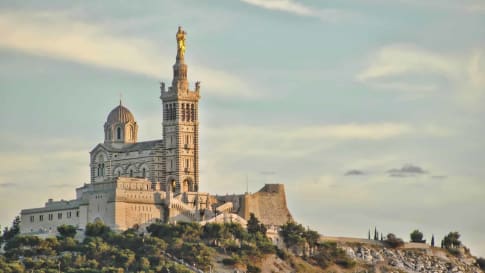
22 days
Mar, Oct, Apr, SepParis-Bordeaux-Provence By Train
Visiting France
For Odyssey Traveller this is one of our unique small group journeys in France, travelling by train from Paris to Bordeaux to Provence and back. Local guides support the tour leader with knowledge about destinations visited over the course of 20 days. There is a single supplement for solo travellers charged.
From A$14,750 AUD
View Tour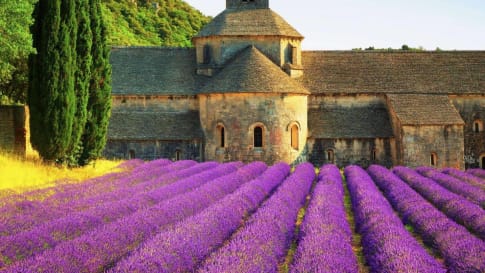
23 days
Sep, MayProvincial France | Small Group Tour for Seniors
Visiting France, Switzerland
This small group program explores the remote mountain plateaux, perched villages and dramatic gorges as well as the Mediterranean coastline.Travel with like-minded people on this tour especially designed for the mature traveller. The villages of Alsace provide an introduction to the diversity which is France. In Burgundy we explore the local villages. Then onto the Jura Mountains, a region rarely visited by tourists. Finally, Provence and the Côte d’Azur, regions of inspiration for artists such as Van Gogh, Cézanne and Picasso.
From A$17,215 AUD
View Tour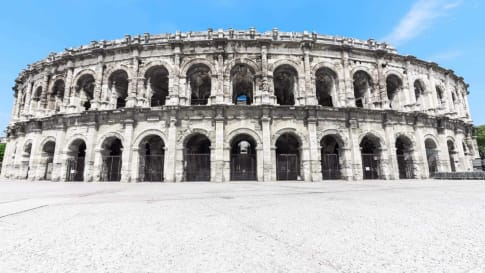
20 days
AugRomans in France small group specialist history tours for seniors
Visiting France, Switzerland
Join our small group tour to explore what remains of the Roman Gaul. France, Belgium, Luxembourg and South-west Germany were occupied by Roman Gaul some 2,000 years ago. To this region the Romans brought roads, bridges, education, cities and, perhaps, above all the Peace of Rome.
From A$16,995 AUD
View Tour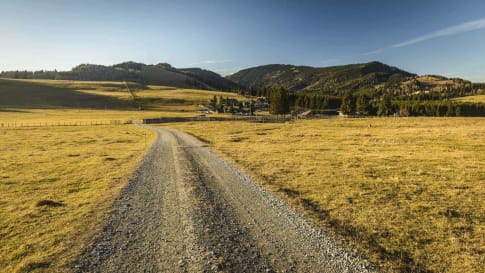
25 days
Sep, May, Apr, OctSecret France | Small group tours France | Places of cultural interest for seniors
Visiting France
Our small group tour designed with the mature traveller in mind, gives you the chance to see eight different locations over 25 days while experiencing local culture, trying regional cuisine, exploring breathtaking architecture and admiring beautiful scenery. From Zurich the tour will move south towards Sare before returning north to Paris where the tour finishes, for a significant part of our journey we will be following old pilgrim pathways, taking the group deep into the villages, valleys, shrines and ski resorts.
From A$17,995 AUD
View Tour
18 days
Oct, AprSouthwest France: Along the Canal du Midi
Visiting France
This small group travel tour is off the beaten track taken by many, exploring and learning from local guides about one of the key world heritages sites, Canal du midi. This escorted tour is for mature couples and solo travellers with a passion for France.
From A$16,500 AUD
View Tour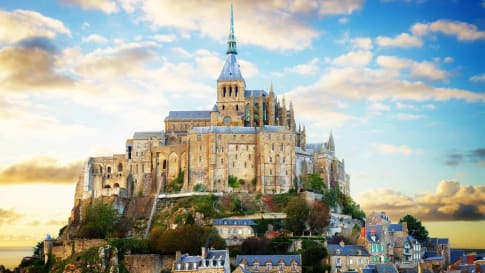
22 days
May, Sep, AprAnglo French Tour | Normandy, Brittany, Channel Islands tour
Visiting Channel Islands, England
Our 21 night program has daily itineraries with plenty of authentic experiences provided by passionate local guides in the key destinations in France, Channel Islands and England for this small group of like minded people. For Solo travellers minimal single supplement applies for this European tour.
From A$17,995 AUD
View TourArticles

Arrondissements of Paris, France
Know about Paris with this article giving the solo traveller or couple confidence when exploring the city on foot or on the metro. A small group tour of Paris mature and senior travellers explore off the beaten track, great galleries such as Marmottan, Musee Maillol.
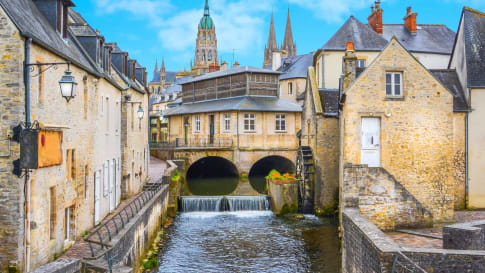
Bayeux, France
The quaint medieval city of Bayeux is home to one big ticket item – the fascinating Bayeux Tapestry, which depicts the Norman Conquest of England by William the Conqueror in 1066. Though the origins of the tapestry are debated by historians, it is of great artistic interest and is an important historical source.
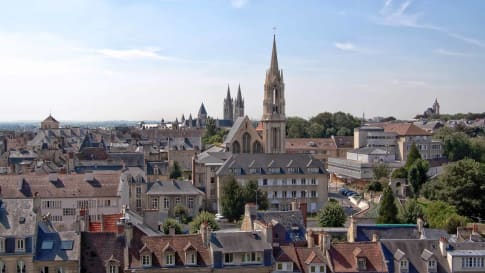
Caen, France
The city of Caen, with a dramatic history spanning from the time of William the Conqueror to the D-Day Landing, is a highlight of any Normandy tour.
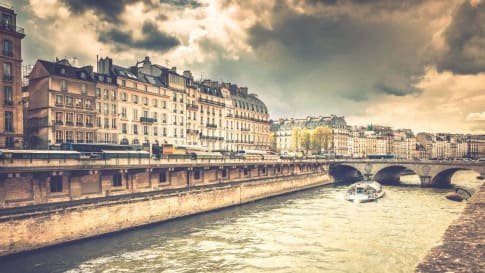
Designing Paris: The Definitive Guide for Travellers
Redesigning Paris The Paris that many of us know and love did not always look as it does now. When Napoleon III instructed Hausmann to tear down the urban centre to make way for the…

Historic Loire Valley
Historic Loire Valley The Loire Valley has been the site of both aristocratic grandeur and thousands of years of territorial conflict. Now a UNESCO World Heritage Site with the 15th century Château de Chenonceau as…

Monet's Giverny Garden
Monet’s Giverny Garden Claude Monet French Impressionist Claude Monet (1840-1926) was a pioneer of a major art movement, but he created a thing of beauty that he believed eclipsed even his own celebrated works of art.…




